Gemmology - the science behind the stones
Gemstones are classified according to their chemical composition and categorised according to the mineral group to which they belong. The mineral groups, and the precious and semi-precious stones, along with an indication of the colour for which they are primarily known are:
Carbonates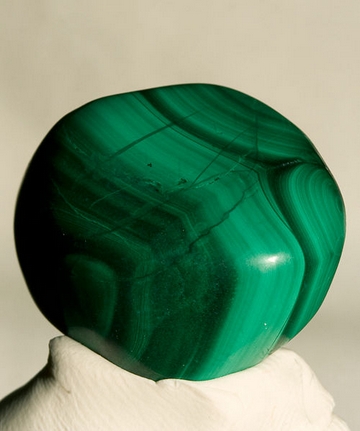
Aragonite usually colourless, but impurities bring shades of blue, green, pink or yellow.
Azurite usually blue
Calcite brown, orange, white, banded
Gazpeite pale green to apple green
Malachite banded light and dark green
Rhodocrosite vivid pink
Halides
Fluorite purples, blues, greens. As prized as any of the quartzes and as beautiful as amethyst.
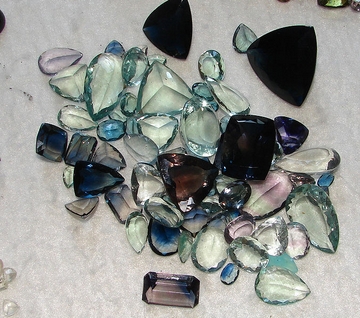
Oxides
Beryl - This group includes Emerald, Aquamarine, Morganite, Heliodore, Red Beryl and Goshenite.
Chrysoberyl yellowish green to brown. Chrysoberyl also has two other varieties: Cat's Eye (also known as Cymophane) which has an inclusion of silver running through it, giving a cat's eye appearance, and Alexandrite, a rare gemstone that changes colour from emerald green to violet, depending on the light . Most Alexandrite available is created in a laboratory, re-creating stones with the exact same chemical composition as the natural stone, which is still expensive, or imitation. Czech designers, Murano glass makers and Swarovski also produce glass crystal stones marketed as alexandrine in colour.
Corundrum in two varieties: Ruby (the red form) and Sapphire (the remaining colours, including of course, blue).
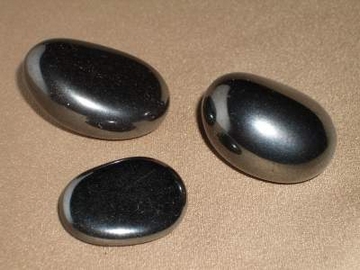 Hematite steely grey or black (reddish brown in powdered form). Magnatized Hematite, so popular with many jewellery makers, is created by magnetizing simulated Hematite - also known as Hemalyke. Natural Hematite, a compact form of iron oxide (otherwise known as rust!) cannot be magnetized.
Hematite steely grey or black (reddish brown in powdered form). Magnatized Hematite, so popular with many jewellery makers, is created by magnetizing simulated Hematite - also known as Hemalyke. Natural Hematite, a compact form of iron oxide (otherwise known as rust!) cannot be magnetized.
Spinel - red, similar to Ruby to which it has a similar chemical composition and is almost as valuable. Spinel can also be black, blue brown, green or purple.
Phosphates
Apatite - usually green in colour, but may be white, colourless, yellow, bluish, reddish, brown, grey, or purple. Not often used in jewellery making as it is relatively soft.
Brazilianite yellow to green
Turquoise the famous turquoise colour varies from greenish blue to sky blue. It is a relatively soft mineral and stones are often impregnated with resins to stabilize them.
Silicates
Silicates represent around 30% of all minerals and the group is further divided into subclasses according to the structure of the minerals within them:
Nesosilicates
This group includes the Garnet group: Almandine, Andradite, (greenish grey to black) Grossular (goosberry green to cinnamon), Pyrope, (red, also known as rhodolite) Spesartine, (orange, reddy brown), Uvarovite (bright green) which are all varieties of the stone marketed as Garnet, with red (or sometimes brown to purple) being the most common.
Howlite white to grey with black markings, similar to turquoise. It is often dyed and substituted for turquoise.
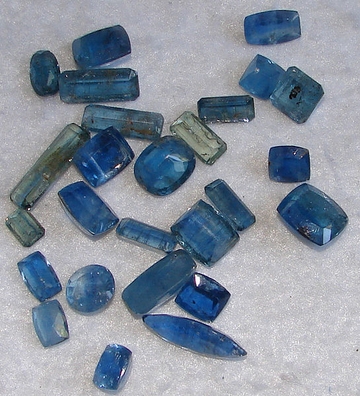 Kyanite blue with white, grey and green
Kyanite blue with white, grey and green
Olivine also known as Chrysolite and Peridot light green to yellowish green.
Topaz yellow but also clear, orange, red blue or green
Zircon (not to be confused with the artificial Cubic Zirconia, the imitation diamond) colourless but also brown red and green and, when heat treated, yellow and blue. Zircon has often been used in place of diamonds having a similar lustre and fire (the sparkle of diamond).
Sorosilicates
Zoisite variable colours but mainly green. The blue variety is known as Tanzanite which has a bluey-lavender colour, and the brilliant green variety has Ruby distributed through it (known as Ruby in Zoisite). The pink variety is known as Thulite.
Inosilicates
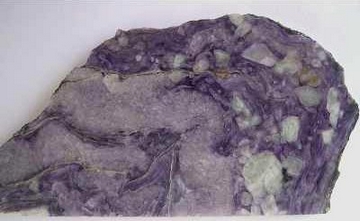 Charoite (also known as Charolite) white, lavender, lilac, violet in a swirling pattern. Found only along the Chary River in Russia.
Charoite (also known as Charolite) white, lavender, lilac, violet in a swirling pattern. Found only along the Chary River in Russia.
Jadeite one of two minerals called Jade, the other being Nephrite. Nephrite, more abundant than Jadeite, is a creamy white to green colour, while Jadeite is usually green to grey-green, white or pale shades of blue or purple but can also be yellow or pink.
Kunzite pinky lilac
Diopside clear, pale green to pale yellow. The variety Chrome Diopside is a lustrous emerald green.
Rhodonite rose-pink, sometimes confused with Rhodochrosite which is streaked with white.
Cyclosilicates
Aquamarine and Emerald are both members of the Beryl family, which belongs to the cyclosilicate group. Red Beryl and Golden Beryl are the names of the gemstones given the Beryl name. Other members of the family are the greeny-yellow heliodor, pink Morganite and colourless Goshenite.
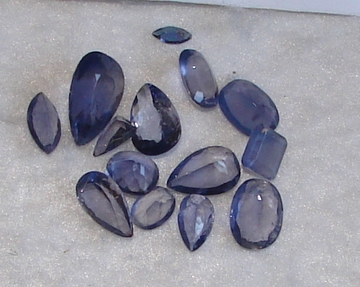 Iolite blue to violet grey. Iolite is pleochroic which means that it changes colour depending on the angle of light, from blue to yellowish grey.
Iolite blue to violet grey. Iolite is pleochroic which means that it changes colour depending on the angle of light, from blue to yellowish grey.
Sugalite - creamy purple.
Another gemstone family in this group is Tourmaline, which is not, as many believe, a single gemstone. Elbaite is what we think of as Tourmaline, which comes in a variety of colours. The blue variety is also known as Indicolite, the pink or red variety called Rubellite and the green Verdelite. There is also a pink and green combination known as Watermelon Tourmaline. There are other minerals within this family but the most common for jewellery making is Schorl, an opaque black, known as Black Tourmeline.
Phyllosilicates
Chrysocolla greeny-blue chrysocolla is too soft to use in jewellery in its pure form, so it is converted into an agate (chalcedony quartz) to give it stability. 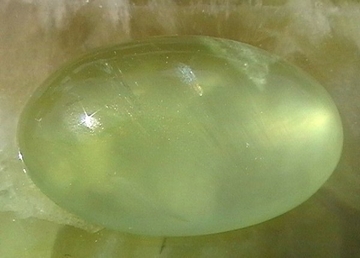
Prehnite pale green to yellow with black flecks
Serpentine - olive green, golden yellow, yellow and black
Tectosilicates
The Feldspars fall within this group:
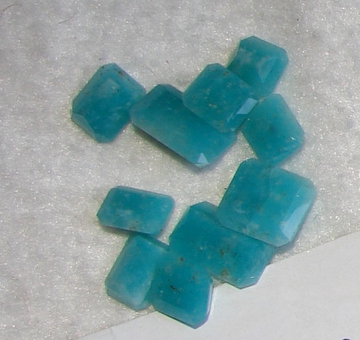 Amazonite bluish-green
Amazonite bluish-green
Labradorite - browny-grey, but displays a colourful shiller in certain lights, with flashes of blue, green yellow or violet, known as labradorescence.
Sodalite - Sodalite contains sodium (hence its name)and its blue-white appearance is reminiscent of stone-washed denim.
Lazurite is one of the components of lapis lazuli and from which lapis lazuli derives its rich blue colour. Lapis can also contain calcite, pyrite and sodalite to varying degrees, depending on its quality.
Moonstone colourless but with a labradorescent shimmer.
Sunstone flashes of reddish colour, also with a labradorescent shimmer.
The Quartz Family of gemstones are also within the Tectosilicates:
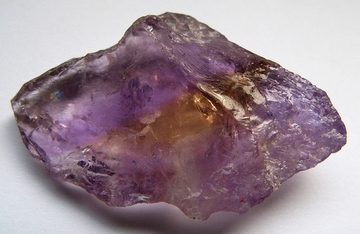
Ametrine amethyst and citrine
Amethyst purple, lavender
Aventurine green, but also orange, brown, yellow, blue and grey.
Citrine lemony shades of yellow
Onyx black, white, banded
Rock Crystal clear, crazed when heat treated.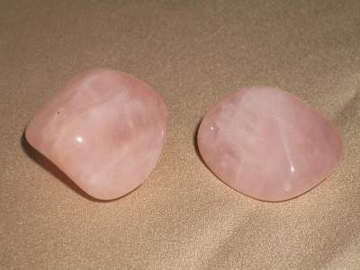
Rose Quartz pink (quartzes with fruit names such as Cherry Quartz or Strawberry Quartz are not forms of Rose Quartz but made from glass).
Sardonyx reddy brown formed by layers of onyx and sard.
Smoky Quartz grey-black, brown
Tiger's Eye golden yellow shot through with brown iron, providing the chatoyancy (tiger's eye) effect.
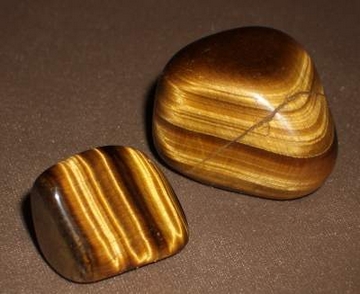
Chalcedony
Within the quartz family are the Chalcedonies, finely grained microcrystals (rather than single crystals) which impart patterns and bands to the stones. These include the stone named Chalcedony, a sky blue, and Chrome Chalcedony, green, along with all of the varieties of Agate and Jasper. Bloodstone (the birthstone of all we Arians, also known as Heliotrope) is a green Jasper shot through with red spots of iron oxide.
Other chalcedonies are:
Carnelian orange to red
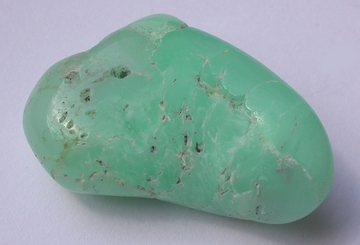 Chrysoprase green
Chrysoprase green
Sard Brown, brownish-red
Sulfates
Celestite - blue
Sulfides
Pyrite Fools Gold. Metallic brassy yellow
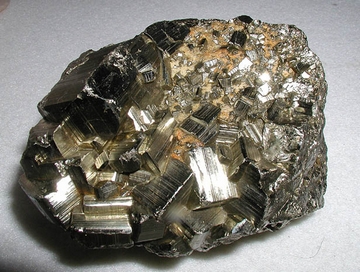
With thanks to Eurico Zimbres and Raike for the photographs
POSTSCRIPT: Diamond is classified as an element. Being the hardest of all minerals it is in a class of its own!
Please browse through my collections where you will find many of these beautiful stones in unique jewellery designs which you can buy for yourself or someone special.
 £0
£0 Handmade jewellery in blues, greens, greys and sil...
Handmade jewellery in blues, greens, greys and sil... Colourful handmade semiprecious gemstone jewellery...
Colourful handmade semiprecious gemstone jewellery... Walberswick was part of the English impressionism ...
Walberswick was part of the English impressionism ... Handmade jewellery in lavenders, lilacs, pinks, gr...
Handmade jewellery in lavenders, lilacs, pinks, gr... Handmade jewellery in earthtones: browns, reds, g...
Handmade jewellery in earthtones: browns, reds, g... Handmade jewellery in yellows, greens and browns. ...
Handmade jewellery in yellows, greens and browns. ... Handmade semiprecious gemstone jewellery in black,...
Handmade semiprecious gemstone jewellery in black,... Beadwork jewellery for that special occasion - or ...
Beadwork jewellery for that special occasion - or ... Handmade earrings in semiprecious gemstones with s...
Handmade earrings in semiprecious gemstones with s...









